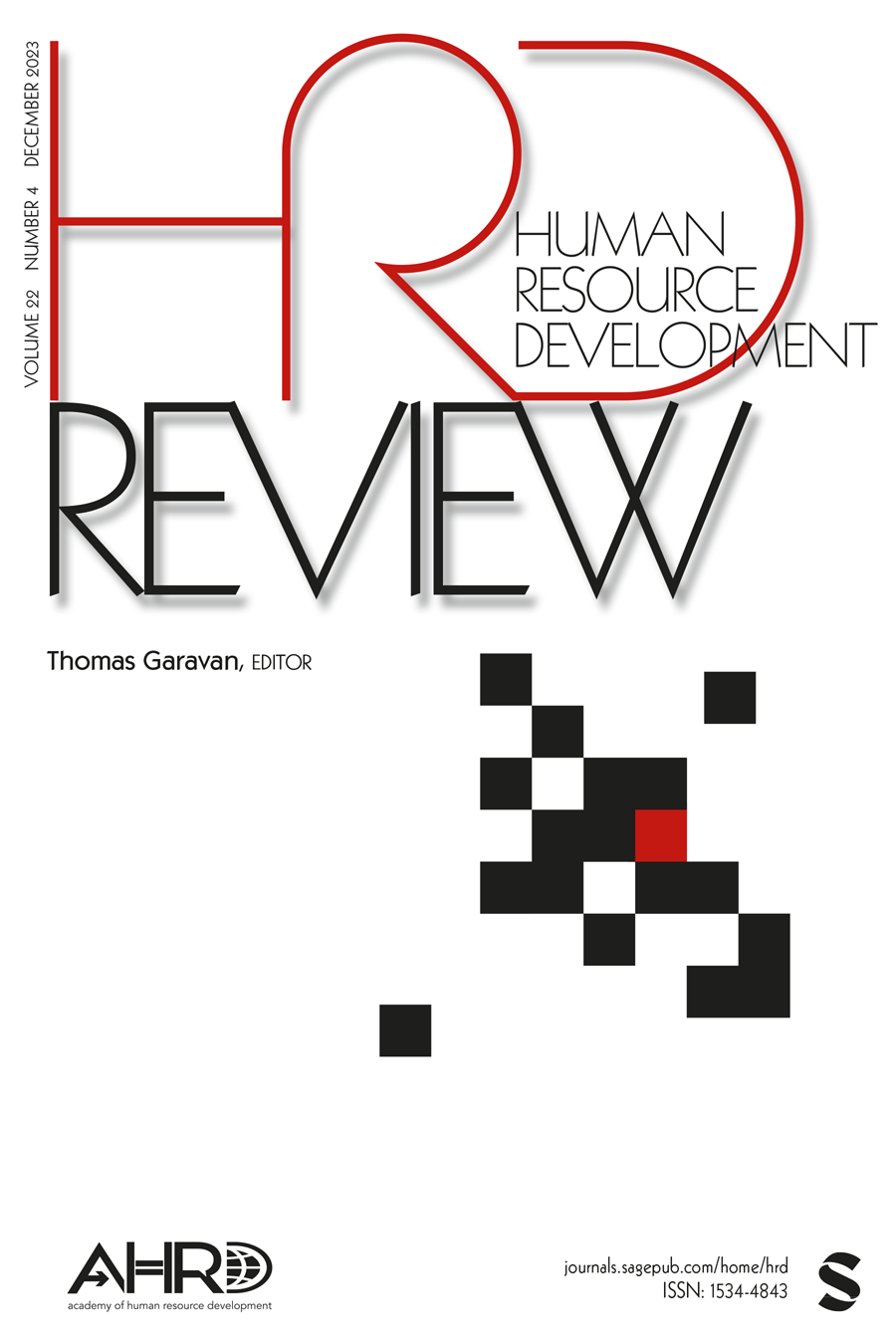复杂性催化下的职场学习与发展反思
IF 4.6
3区 管理学
Q1 MANAGEMENT
引用次数: 0
摘要
工作场所学习模式在历史上是在一个相对稳定、可预测、有点划分的世界中发展起来的。但今天,我们生活在极端的不确定性和偶然性中。这个世界是一个实时的、真实的、多人的、高风险的游戏桌。经历新冠肺炎全球重置(Schwab&Malleret,2020)的人不会有任何困难同意我们正处于一个如此复杂的时代,很可能需要重新思考我们所做的一切。复杂性已经改变了工作场所的学习环境。复杂性源自拉丁语单词complexus,意思是“围绕、包容”;完成词的过去分词——意为“包围,拥抱”;和plecter——意思是“编织、编织、缠绕”。复杂这个词是“由相互连接的部分组成的整体”(在线词源词典),它们也是相互依存的。学者们(例如,Lee,2003;Weick&Sutcliffe,2001)几十年前就开始研究复杂性对工作和组织的影响。是什么使它今天脱颖而出?尤其是复杂性如何改变工作场所的学习和发展?复杂性的哪些特征正在影响它们的设计和实现?这些是我们在《重新思考职场学习与发展》(Watkins&Marsick,2023)中试图回答的问题。我们的书中有一个L&D领导者的有目的的样本对这些问题的回答,他们加入了我们的远程咖啡和对话。随后,我们邀请了一批有目的的职场学习与发展从业者和首席学习官,讨论他们如何看待学习与发展适应组织和系统的变革。在这篇文章中,我们分享了他们关于在不同规模、目的和文化的组织中学习的一些故事、观点和预测。本文章由计算机程序翻译,如有差异,请以英文原文为准。
Rethinking Workplace Learning and Development Catalyzed by Complexity
Workplace learning models were historically developed in a relatively stable, predictable, somewhat compartmentalized world. But today we live in radical uncertainty and contingency. The world is a real-time, real-consequences, multiplayer, high stakes gaming table. No one living through the Global Reset (Schwab & Malleret, 2020) of COVID-19 would have any trouble agreeing that we are in an age of such complexity that it is likely to require a rethinking of all that we do. Complexity has changed the workplace learning playing field. Complexity derives from the Latin word complexus—meaning “surrounding, encompassing”; the past participle of complecti—meaning “to encircle, embrace”; and plectere—meaning “to weave, braid, twine, entwine”. The word complex is “a whole comprised of interconnected parts” (Online Etymology Dictionary) that are also interdependent. Scholars (e.g., Lee, 2003; Weick & Sutcliffe, 2001) began examining complexity’s impact on work and organizations decades ago. What brings it to the fore today? And how in particular is complexity changing workplace learning and development? What features of complexity are impacting their design and implementation? These are the questions we sought to answer in Rethinking Workplace Learning and Development (Watkins & Marsick, 2023). Our book features responses to these questions by a purposeful sample of L&D leaders, who joined us for remote coffee and conversations. We subsequently invited a purposeful sample of leading Workplace Learning & Development practitioners and Chief Learning Officers (CLOs) to discuss how they see Learning & Development adapting to support change in organizations and systems. In this article, we share some of their stories, views and predictions about learning in organizations of different sizes, purposes, and cultures.
求助全文
通过发布文献求助,成功后即可免费获取论文全文。
去求助
来源期刊

Human Resource Development Review
MANAGEMENT-
CiteScore
9.60
自引率
17.20%
发文量
35
期刊介绍:
As described elsewhere, Human Resource Development Review is a theory development journal for scholars of human resource development and related disciplines. Human Resource Development Review publishes articles that make theoretical contributions on theory development, foundations of HRD, theory building methods, and integrative reviews of the relevant literature. Papers whose central focus is empirical findings, including empirical method and design are not considered for publication in Human Resource Development Review. This journal encourages submissions that provide new theoretical insights to advance our understanding of human resource development and related disciplines. Such papers may include syntheses of existing bodies of theory, new substantive theories, exploratory conceptual models, taxonomies and typology developed as foundations for theory, treatises in formal theory construction, papers on the history of theory, critique of theory that includes alternative research propositions, metatheory, and integrative literature reviews with strong theoretical implications. Papers addressing foundations of HRD might address philosophies of HRD, historical foundations, definitions of the field, conceptual organization of the field, and ethical foundations. Human Resource Development Review takes a multi-paradigm view of theory building so submissions from different paradigms are encouraged.
 求助内容:
求助内容: 应助结果提醒方式:
应助结果提醒方式:


